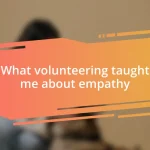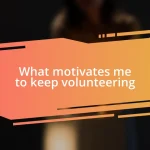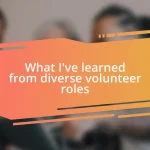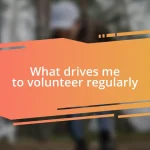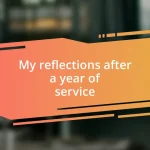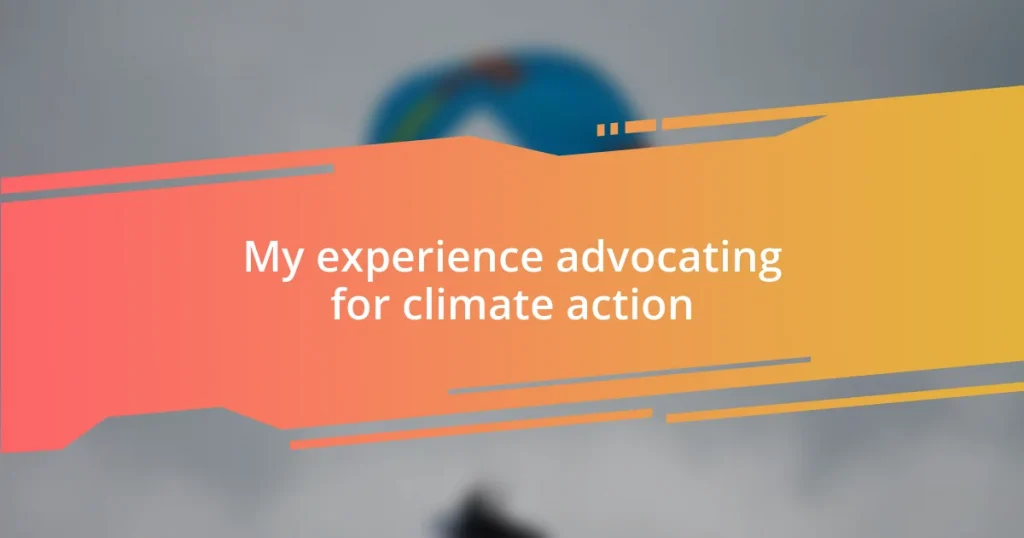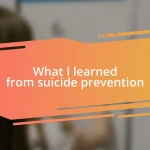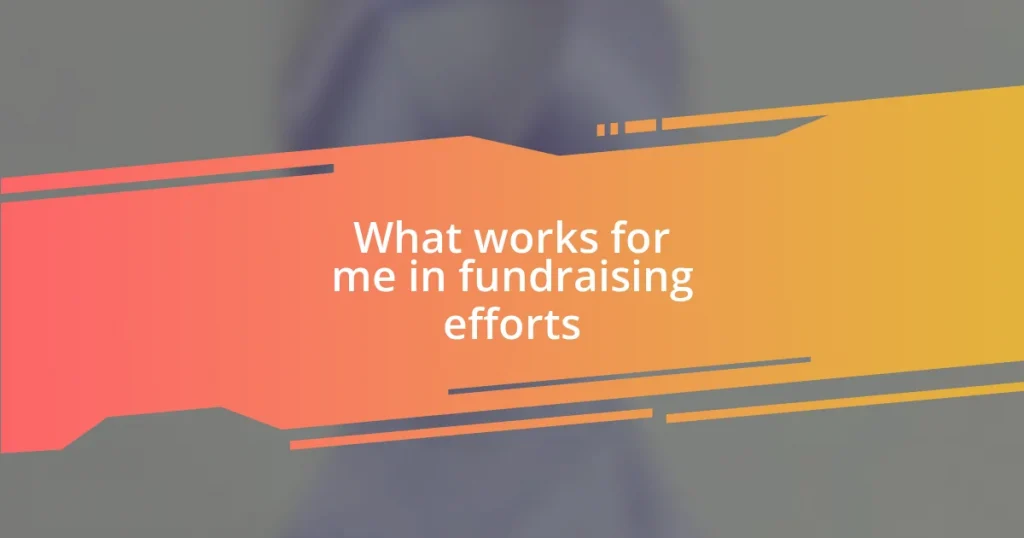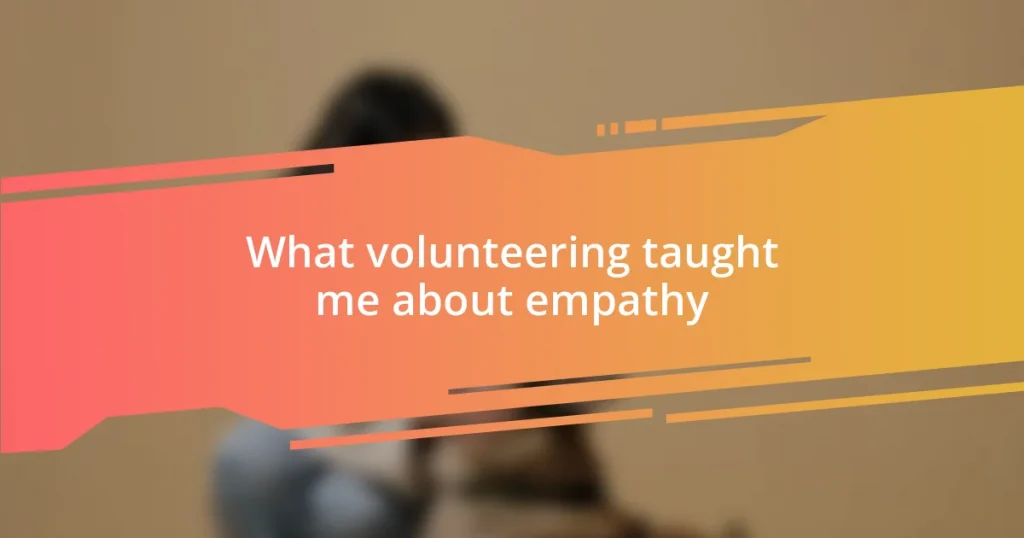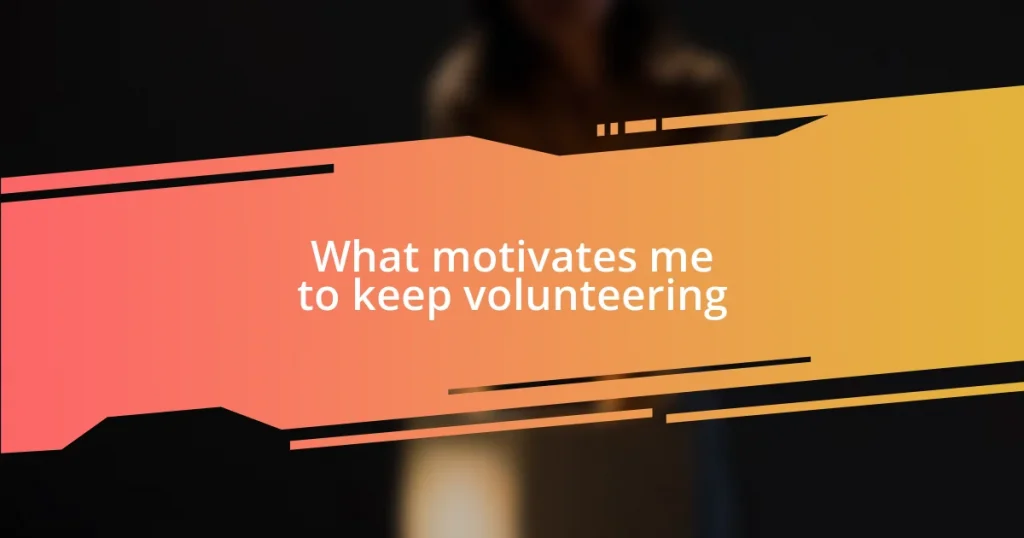Key takeaways:
- The author’s climate advocacy journey sparked from a personal moment of realization about environmental impact, emphasizing the importance of belonging and community support.
- Engaging the community effectively involves active listening, sharing personal stories, and creating inclusive spaces, which fosters collective action and trust.
- Measuring success transcends quantitative metrics, focusing instead on behavioral changes and personal narratives that cultivate a culture of sustainability within the community.
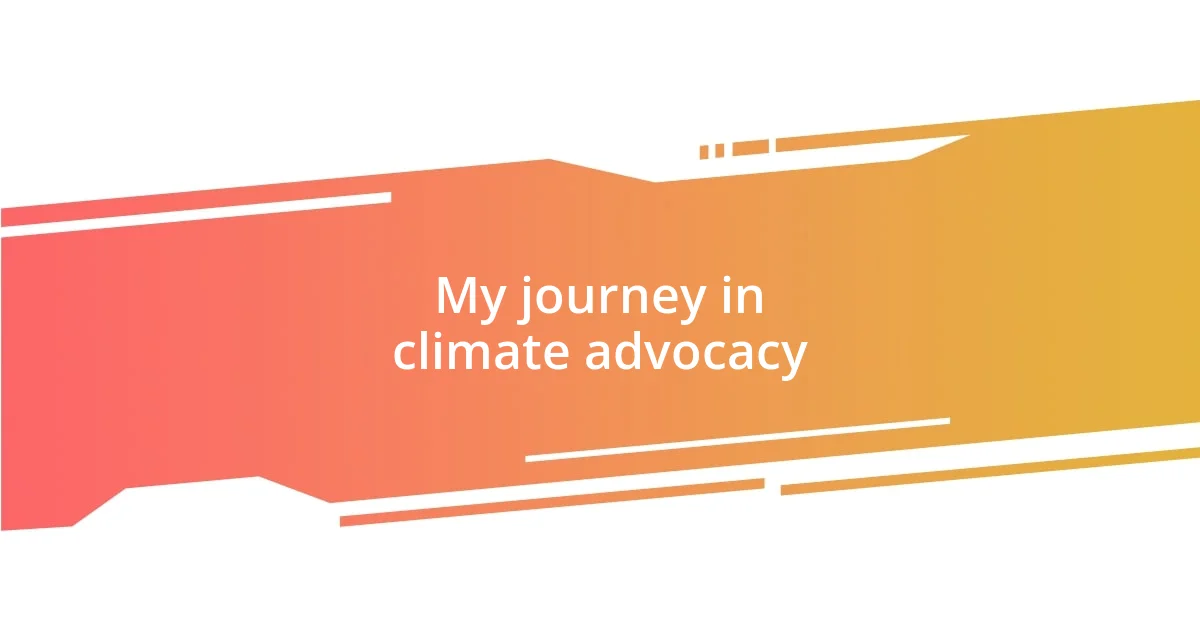
My journey in climate advocacy
My journey in climate advocacy began with a simple moment of awakening—I remember standing on a beach, watching as litter and debris mingled with the waves. It struck me then how deeply our choices impact the environment. That realization ignited a fire in me.
As I dove into activism, I vividly recall my first community meeting, filled with passionate voices and hopeful ideas. I was surprised but inspired by how many people felt as strongly about climate issues as I did. It felt like joining a family bound by a shared mission. Have you ever felt that rush of belonging? It’s powerful, and it motivated me to stay involved.
Over time, I’ve learned that advocacy isn’t just about making noise; it’s about listening and connecting. I found joy in sharing stories with others—each one revealing the personal stakes we all have in this fight. Have you thought about the personal stories that fuel your passion? For me, these narratives reinforce the urgency of our cause, reminding me that every action counts in protecting our planet.
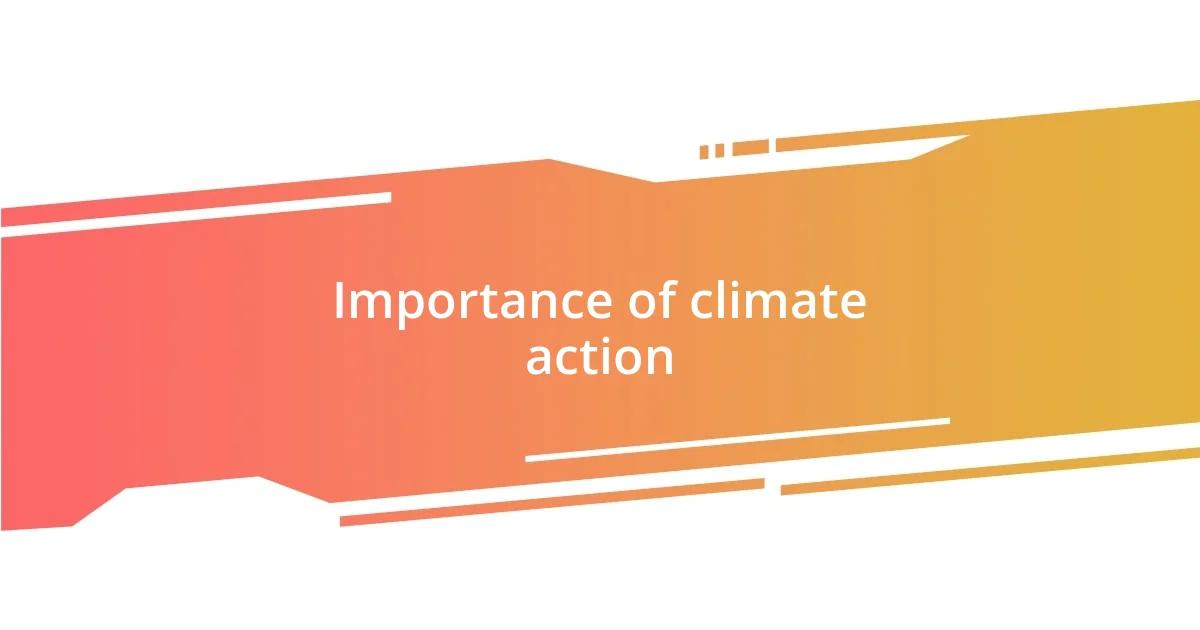
Importance of climate action
The urgency of climate action cannot be overstated. I remember attending a climate march where people of all ages gathered to demand change. Seeing children holding signs, “There is no Planet B,” filled me with both hope and a sense of responsibility. That day, I realized our fight is not just for us but for future generations.
We are at a crossroads, where inaction could lead to devastating consequences. I often think about how my hometown has experienced increasing floods and heatwaves. This was once a place of lush greenery, and now it feels like we’re witnessing nature’s warning signals. This personal connection drives home the importance of acting swiftly and decisively to mitigate climate change.
I’ve also encountered many individuals who, despite feeling overwhelmed by the issues, have found empowerment through collective action. For instance, a friend of mine started a community garden that not only beautified our neighborhood but also taught us sustainable practices. It’s moments like these that illustrate how every local initiative contributes to the global fight. When we realize our individual efforts can lead to community transformation, the importance of climate action becomes profoundly personal.
| Key Aspects | Impact |
|---|---|
| Community Involvement | Fosters collective responsibility and action |
| Personal Ownership | Encourages individual initiatives to promote sustainability |
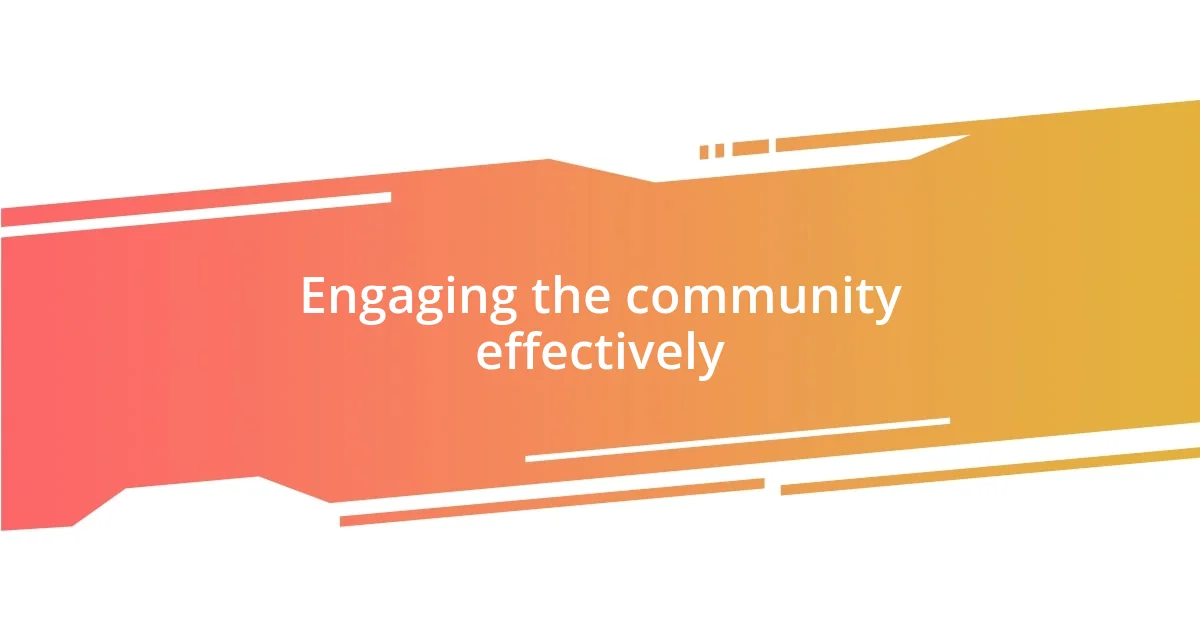
Engaging the community effectively
Engaging the community effectively requires a deep understanding of its members and their unique perspectives. I remember the day I stood before a group of local residents, unsure of what to say. But as I shared how climate change had altered my own experiences—suddenly witnessing drought where I used to play among riverbanks—the room shifted. It became a conversation, not a lecture. When we share our truths, it not only builds trust but also ignites passion for collective action.
To truly engage the community, consider these key strategies:
- Listen Actively: Encourage dialogue rather than dictating your message. Understanding local concerns opens doors.
- Create Inclusive Spaces: Host events that welcome diverse voices, ensuring everyone feels valued and heard.
- Share Personal Stories: Personally connect with your audience. Your anecdotes can resonate deeply, inspiring others to share their experiences.
- Utilize Local Media: Leverage local publications or social media to highlight community achievements in climate advocacy, reinforcing a sense of unity.
- Encourage Participation: Provide opportunities for individuals to get involved; be it through clean-up days or workshops, hands-on experiences create lasting impact.
These tactics have transformed my own journey in advocacy, demonstrating that real change happens when community members unite around shared experiences and personal stakes.
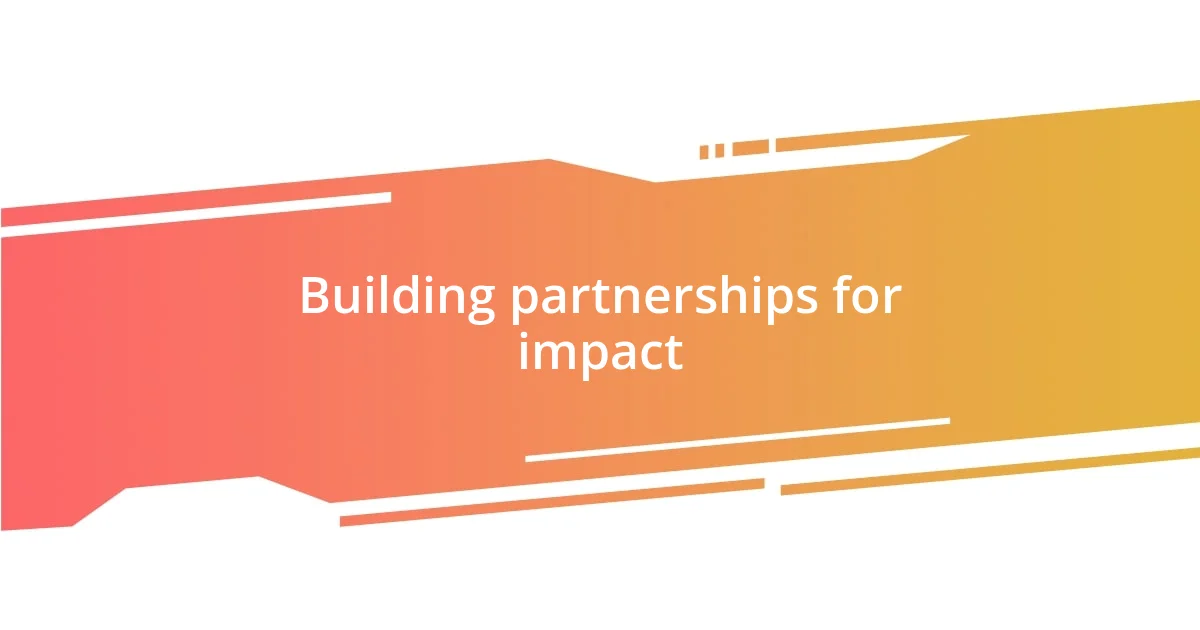
Building partnerships for impact
Building meaningful partnerships is essential for creating lasting impact in the fight against climate change. I remember when I teamed up with a local university for a sustainability project. The collaboration not only brought fresh ideas but also energized our community—students were eager to volunteer, and their innovative approaches sparked new conversations about our environmental responsibilities. Sometimes I wonder, how much stronger could our efforts be if we all connected with local institutions, businesses, and nonprofits?
Connecting with diverse partners extends our reach and amplifies our message. When I joined forces with a local artist to create a mural depicting the effects of climate change, it turned into more than just art; it became a vibrant focal point for discussions within our community. I saw people stop, look, and engage deeply with the artwork and the issues it represented. Have you ever experienced how art can transform understanding and inspire action? This project taught me how partnerships can fuse creativity with advocacy, breathing life into our shared goals.
Effective climate action thrives on collaboration, but it also requires nurturing these relationships. I had to learn that alliances need regular check-ins and openness to feedback. One time, a partner voiced concerns over our shared plan. Instead of dismissing it, I embraced the challenge. This conversation led to refining our approach, making it more inclusive and impactful. Isn’t it fascinating how these discussions can lead to unexpected growth? For me, this demonstrated that partnerships are not about simply sharing resources; they’re about building trust and learning from one another to make a meaningful difference.
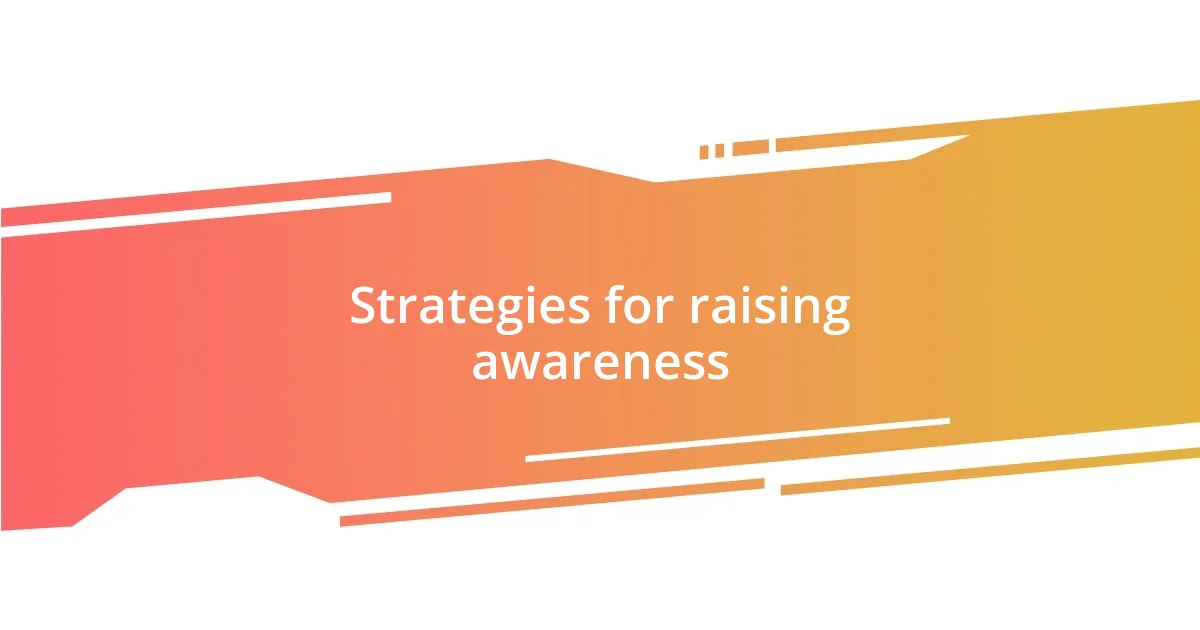
Strategies for raising awareness
Strategies for raising awareness can take many forms, each tailored to resonate with specific audiences. One memorable experience for me was organizing a neighborhood climate forum. I was surprised by the turnout; even those who had never engaged with environmental issues showed up because they felt invited. This taught me how creating a safe space for discussion can break down barriers. Have you ever wondered why people resist these conversations? Often, it’s because they don’t feel their voices matter.
Another impactful strategy I discovered is utilizing visual storytelling, particularly through social media. I began sharing images and short videos of local environmental changes, like the trees that used to flourish in my backyard, now struggling under climate stress. The emotional reaction was palpable; my neighbors started sharing their own stories, creating a ripple effect. It was fascinating to see how visuals can evoke empathy and inspire action. Isn’t it interesting how one photo can ignite a movement?
Lastly, engaging schools has proven to be a game-changer in raising awareness. I recall collaborating with a local high school to design workshops focused on sustainability. The students were not only eager to learn but also passionate about spreading the word through their own networks. I often reflect on how powerful youth voices can be—when students feel empowered, they advocate for change beyond the classroom. Have you found that young people often have fresh perspectives? Their enthusiasm can fuel community-wide initiatives, sparking conversations that reach far and wide.
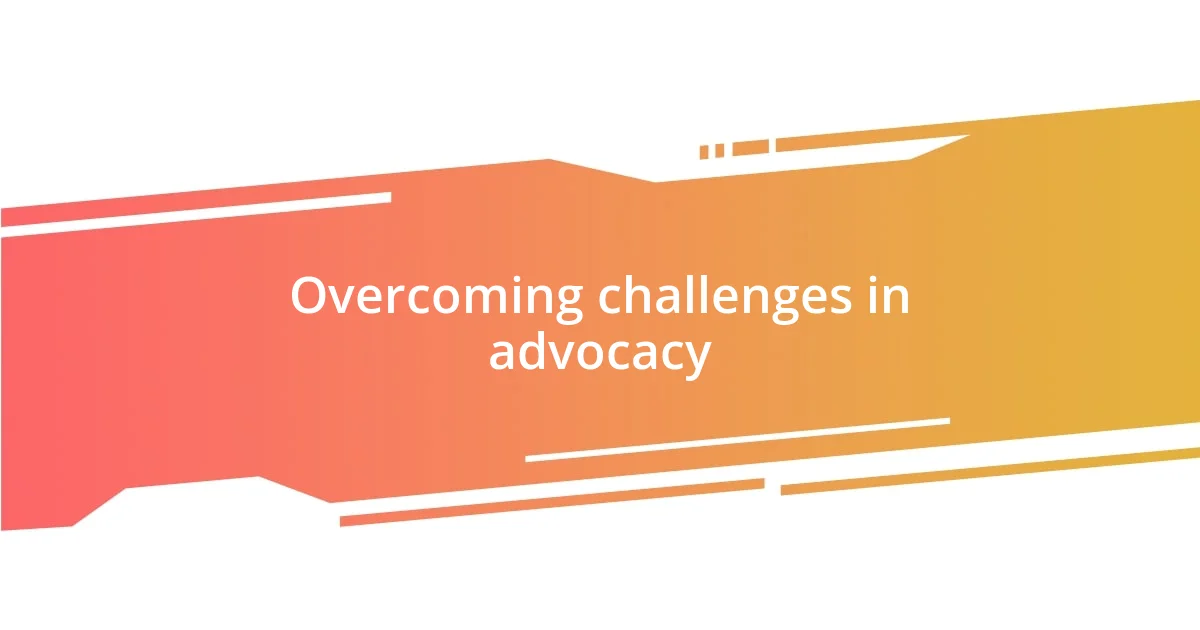
Overcoming challenges in advocacy
Advocacy can often feel like navigating a complex maze, especially when facing opposition or indifference. I remember a particular community meeting where my climate initiatives were met with skepticism. Instead of being discouraged, I took a step back to ask myself, “What are their concerns?” Listening to their worries about economic impacts allowed me to tailor my message more effectively. It was a pivotal moment, showing me that addressing fears can transform resistance into partnership.
Sometimes, the biggest challenge isn’t external pushback but our own internal doubts. During a pivotal campaign, I caught myself wondering, “Am I making a real difference?” This feeling intensified when faced with setbacks, like funding cuts or dwindling participation. However, I learned to reframe those moments; I began documenting small victories, no matter how minor they felt. Celebrating even the smallest milestones kept my motivation alive. Can you recall a time when perseverance turned doubt into determination?
Building resilience is crucial in overcoming these challenges. I found that connecting with other advocates helps foster a sense of community and shared purpose. There was a time when my friend and I organized regular “check-in” sessions to share our struggles and solutions. These gatherings turned into safe havens for vulnerability and encouragement. Finding a support system not only made me feel less isolated but empowered me to keep pushing forward. How often do you seek support from others in tough times? It’s a reminder that advocacy isn’t a solo journey; it’s a collective effort that thrives on collaboration.
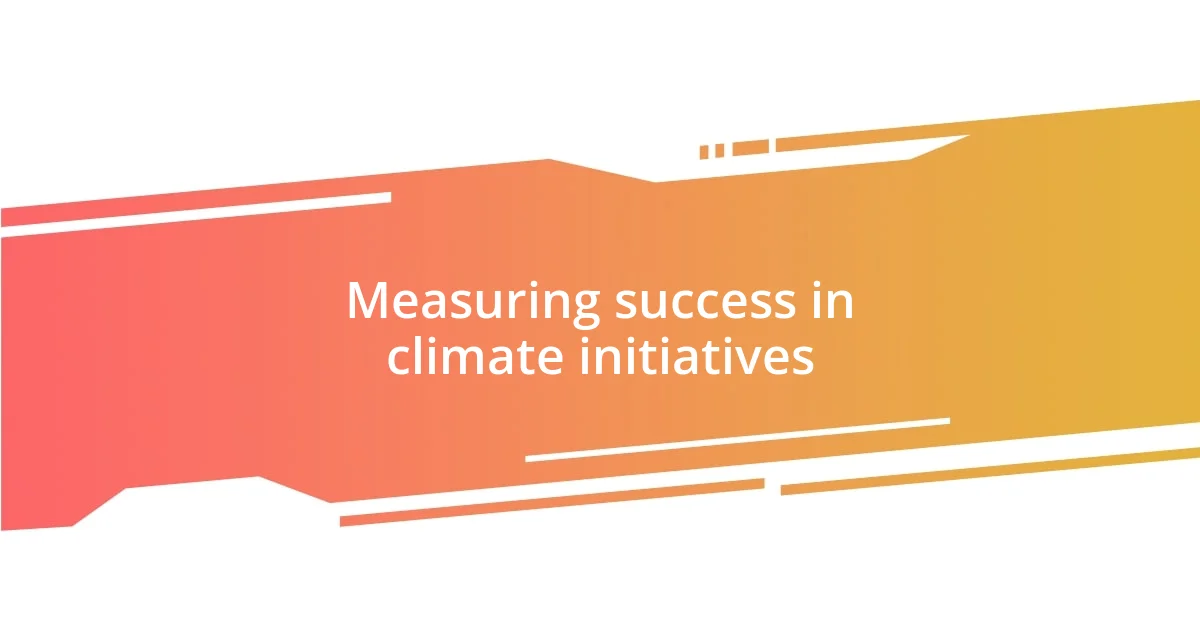
Measuring success in climate initiatives
Measuring success in climate initiatives can often feel elusive. I recall an initiative we launched to reduce plastic waste in our community. At first, the numbers seemed discouraging; only a modest percentage of residents participated. However, when we started collecting qualitative data—like sharing stories from families about reducing single-use plastics—I realized that success isn’t only about numbers. Isn’t it fascinating how personal stories can resonate more deeply than statistics?
One of the critical indicators I’ve found helpful in evaluating our impact is behavioral change within the community. After implementing a recycling campaign, I noticed a marked increase in residents’ discussions about waste management. It wasn’t just about more bins; it was about altering mindsets. I often ask myself: how do we measure these intangible shifts? While tangible results like increased recycling rates are important, I believe the true victory lies in fostering a culture of sustainability that can last for generations.
Finally, reflecting on progress through community engagement is essential. In my experience, every feedback session after a project revealed new insights and areas for improvement. I remember feeling a mix of anxiety and excitement when sharing results; it prompted raw conversations about what worked and what didn’t. Isn’t it empowering to realize that every piece of feedback is a stepping stone toward success? These open dialogues not only strengthen future initiatives but also weave a tighter community fabric, helping everyone feel included and invested in the climate cause.

